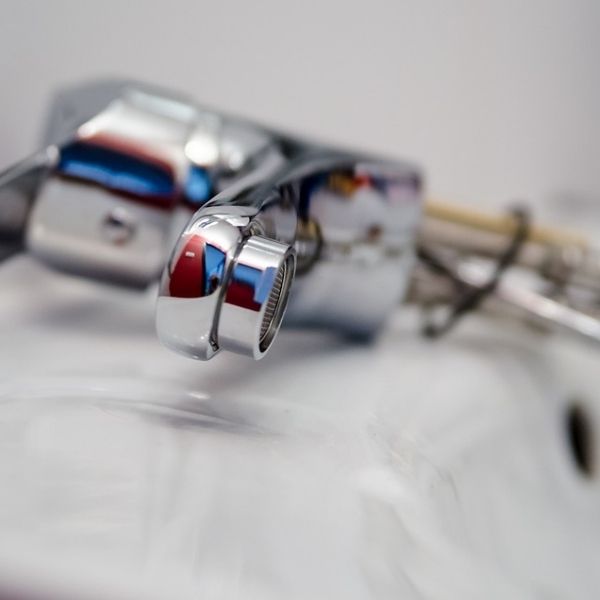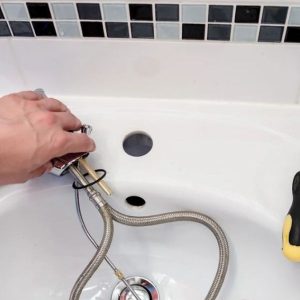Signs You Need a New Kitchen Faucet
Having a damaged or broken kitchen faucet could result in massive wastage of water. Hence, it is essential to ensure that faucets work properly.
Perhaps you’re thinking about when you need to replace a kitchen faucet. There could be many possible reasons which indicate your kitchen needs a new faucet.
Here’s a quick rundown of the top reasons which will help you discover your old faucet may need a repair.

1. Dripping or Leakage of Pipes
One of the critical reasons which indicate you need a new faucet is the drips or leaks of pipes. This could occur due to malfunctioning valves or having high water pressure in the pipes.
Likewise, if you observe water leakage from the bottom of the faucet or beneath the sinkholes, there is also a chance your old faucet needs repair. For this reason, get in touch with the plumbing expertise.
2. Broken or Damaged Handles
Another indication which indicates you need a new kitchen faucet is that if the handle on your bathroom sink stops functioning properly. In this case, you can go for a new faucet or seek professional help to replace a kitchen faucet.
3. Clogged Pipes
If you notice your faucet doesn’t produce a nice stream of water, the problem likely occurs because of disturbance in the supply line connections or clogged pipes.
4. Unwanted Noise
Perhaps you may observe brassy sounds such as screeching or clanking coming out from your faucet. This could be a reason either your old faucet needs replacement or a bit of maintenance.
Similarly, if you notice clicking noise coming from your faucet, you can get rid of this by replacing a worn rubber washer on your own or taking professional help to identify the true cause.
5. Rusty Faucet
If your previous faucet is rusty, it can cause leakage of harmful minerals into your drinking water, making it more critical than ever to replace the faucet.
How Much Does It Cost to Replace a Kitchen Faucet?
Trust me, changing an old kitchen faucet is a very easy-to-do job. You don’t need to master any plumbing expertise. Just by watching some DIY projects videos or by reading the manufacturer’s instructions written in a manual, you can easily replace a kitchen faucet.
Typically, the cost of changing a faucet is between $162-$354. Just assume if you seek professional help, you’re required to pay an additional $150 – $200 with the cost of the faucet.
Hence, by doing it on your own, you can save extra bucks.

Is It Hard to Replace a Kitchen Faucet?
Probably, changing a kitchen faucet might be daunting to you. But to replace a kitchen faucet is a super-easy DIY job. With a few things and the manufacturer’s instructions manual, you can perform this job efficiently. Moreover, you can watch quick DIY projects videos on how to replace a kitchen faucet.
There are some common reasons which will let you know your old kitchen faucet requires a recondition.
- Broken or damaged water supply lines
- Cold handles and leaks turn
- Mixing of hot and cold water lines
- Clogged stains around faucet holes or sinkholes
- Congested faucet tip and a crusty spout
What Do You Need to Replace a Kitchen Faucet?
- A new faucet
- Basin wrench and some other adjustable wrench to eradicate all the tubes
- Teflon tape
- Old towel and rags to use around the sink
- Penetrating oil to protect faucet finish
- Locking pliers to remove all the gunk
You can easily purchase the mentioned above components from any local store or any reputable website online.
How to Remove an Old Faucet
The most challenging part is to remove an old faucet. Unexpected problems occur, including blockage of a supply line, congested pipes, clogged spout, a faucet tip, and loose water connections. But you don’t need to worry, as, with our step-by-step process, you can easily remove kitchen sink faucets with a new one. Let’s dive into it.
Step # 1: Remove everything from the sink
First of all, remove everything under the sink area with the help of an old towel to prevent water lines from being damaged.
Step # 2: – Eradicate the drain lines & shut off valves
After that, disconnect all the P-trays and drain lines that could result in blockage of water lines. Later, inspect your faucet whether it has shut off valves or not. If it doesn’t include it, purchase it.
And if you found it with your faucet, ensure either it is working properly or not by turning on the hot and cold water at the faucet and shutting off the valves. If you still notice drips or leaks, use a socket wrench to replace a faucet with a new faucet.
Step # 3: Examine water lines & take snapshots
After shut off valves, now it’s time to examine water supply lines. These supply lines deliver hot and cold water in the sink area. Having clogged stains or dirt could disturb the flow of water and may damage the supply lines.
You can use a basin wrench to fix faucet supply lines on your own, or you can seek professional help to have flexible supply lines. Take snapshots around the sink to use it later.
Step # 4: Turn off water supply lines
After examining the water line, turn off all the supply lines and remember the hot and cold water directions, especially if the hoses aren’t marked.
Step # 5: Remove old kitchen faucet
Lastly, loosen all the bolts and screws that hold the faucet body. You can find different wrench variants available online, but we suggest using the socket wrench or a basin wrench as they can easily replace the faucet. Once the faucet comes out, wipe down the entire area to get rid of nasty stains.
Not you’re all set to remove your old faucet.

How to Install a New Kitchen Faucet
If your existing faucet stops working and you’re thinking of installing a new one, follow the steps mentioned below.
Step # 1: Install the New Faucet
You may find two different variants in a faucet, such as a single-hole faucet and a three-hole faucet. No matter which type of faucet you want to install, the first step is to line up the deck plate if your sink has three holes.
Typically, you don’t require a deck plate to line up the kitchen sink if it has a single hole. After that, drop down all the tubes hanging coming out from a faucet in the spot. With the help of a metal bracket, you can keep the faucet fixed in one place.
Moreover, some kitchen & bathroom faucets come with a deck plate that covers extra holes/outside holes, so you can use them for separate hot and cold temperature knobs and utilize those holes to turn them into an instant soap dispenser.
Step # 2: Tighten the faucet
With the super-efficient tools available in the markets, you don’t need to get down under the faucet to tighten them. Instead, by using an adjustable wrench, such as a socket wrench, you’re all set to snug the faucet alongside the kitchen sink.
Step # 3: Connect the sprayer hose
After tightening the existing faucet, thread the sprayer hose down under the kitchen sink to attach the faucet. Later, add weights under the sink and connect the spray hose with just a single click.
Step # 4: Fix the faucet water supply line
Now it’s time to fix the water supply line. Most faucets are marked with indications to identify hot and cold water lines. With the use of Teflon tape, you can easily connect the faucet. You can also mount the faucet with a wrench.
Most new faucets come with an extra hole to keep liquids or use as a soap dispenser.
Step # 5: Check for loosening connections
After connecting the faucet supply lines, make sure to check no leaks are produced. If you still find any leaks, tighten up the connections, and you’re all set to install a new faucet. Those faucets that come along with an escutcheon plate are more durable and long-lasting.
Wrapping Up
That concludes our guide on how to install & replace a kitchen faucet. Make sure to check out the faucets once a week or at least a month, as broken or damaged ones may result in unfavorable situations.
Besides, if you notice any unwanted noise coming out from a faucet, immediately connect with the plumbing professionals. These professionals will help you tighten connections in the waterline. Apart from that, they will inspect water supply lines and fix the faucet immediately. Furthermore, they can select the sink cabinet and install faucets, too.
You can easily do the faucet removal on your own by reading the steps mentioned above on how to replace a kitchen faucet.
